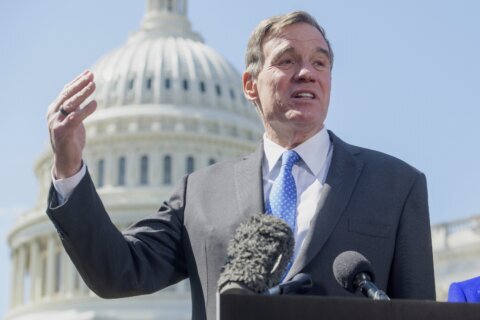RICHMOND — A $20.7 billion hole for Virginia’s pension plans as of June 30 is an improvement, but clearly leaves significant additional funding needs over coming years.
In a presentation to Virginia’s Senate Finance Committee Thursday, Virginia Retirement System Director Patricia Bishop said the state’s teacher pension plan has the largest unfunded liability, approximately $12 billion, followed by the funds for state workers and local governments.
The estimated $20.7 billion in unfunded pension liabilities is an improvement over the $24.5 billion estimated gap at the same time last year. Bishop credits positive market returns, fewer deferred government contributions, lower inflation and lower plan costs as the state offers less of a pension benefit to new workers.
Many of those workers are now contributing to a second retirement account as part of a hybrid pension and 401(k)-style plan.
The state has automatically enrolled more than half of the eligible workers to contribute, while a smaller portion have voluntarily opted to contribute the maximum 4 percent of their salary.
In addition to the pension plans, the state and local governments have a net liability for other retirement benefits of more than $4 billion.
“The good news here … is that [unfunded liabilities] have declined,” Bishop said of the total pension and other liabilities over the last year.
How does Virginia compare with nearby states? Virginia’s total pension liability (which includes pensions and other postemployments benefifts) was $29.5 billion, Bishop said. North Carolina’s was $44 billion and Maryland’s was $35 billion.
The Metro system has also faced attacks from lawmakers over its own, smaller unfunded pension liabilities.
Ongoing health care costs
Virginia expects to pay more even before workers retire due to an aging and less healthy workforce compared to the past, the state’s human resources leader told the committee.
The average age of those covered by the state employee health plan is around 48, compared to a national average of 41.
The number of state employes who are overweight of obese dropped from 74 percent to 70 percent, said Sara Wilson, the director of the Department of Human Resource Management. That’s among workers who agreed to take health risk assessments.
People with diabetes, orthopedic issues or heart problems drive 37 percent of state health plan spending.
Overall, the state’s prescription drug costs rose 9.7 percent last year and outpatient doctor or hospital visit spending rose as inpatient hospital spending dropped slightly.







